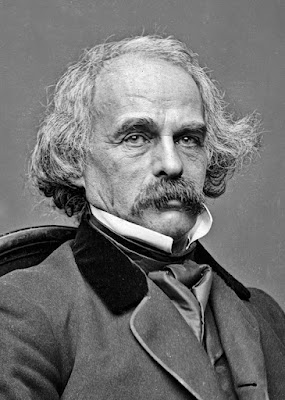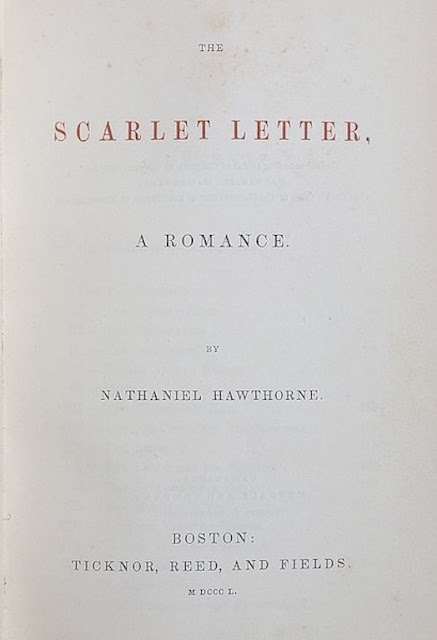On This Date In History
On March 16, 1751, James Madison, drafter of the Constitution, recorder of the Constitutional Convention, author of the Federalist Papers and fourth president of the United States, is born in Port Conway, Virginia, to James Madison Sr. and Nellie Conway Madison. The oldest of 12 children, Madison was raised on the family plantation, Montpelier, in Orange County, Virginia.
Madison first distinguished himself as a student at the College of New Jersey (now Princeton University), where he successfully completed a four-year course of study in two years and, in 1769, helped found the American Whig Society, the second literary and debate society at Princeton (and the world), to rival the previously established Cliosophic Society.
Madison returned to Virginia with intellectual accolades but poor health in 1771. By 1776, he was sufficiently recovered to serve for three years in the legislature of the new state of Virginia, where he came to know and admire Thomas Jefferson. In this capacity, he assisted with the drafting of the Virginia Declaration of Religious Freedom and the critical decision for Virginia to cede its western claims to the Continental Congress.
Madison is best remembered for his critical role in the Constitutional Convention of 1787, where he presented the Virginia Plan to the assembled delegates in Philadelphia and oversaw the difficult process of negotiation and compromise that led to the drafting of the final Constitution. Madison’s published Notes on the Convention are considered the most detailed and accurate account of what occurred in the closed-session debates. (Madison forbade the publishing of his notes until all the participants were deceased.) After the Constitution was submitted to the people for ratification, Madison collaborated with John Jay and Alexander Hamilton on The Federalist Papers, a series of pamphlets that argued for the acceptance of the new government. Madison penned the most famous of the pamphlets, Federalist No. 10, which made an incisive argument for the ability of a large federation to preserve individual rights.
In 1794, Madison married a young widow, Dolley Payne Todd, who would prove to be Washington, D.C.’s finest hostess during Madison’s years as secretary of state to the widowed Thomas Jefferson and then as the fourth president of the United States from 1809 to 1817. Dolley Madison earned a special place in the nation’s memory for saving a portrait of George Washington before fleeing the burning White House during the War of 1812.
Through the years, Madison’s friendship with Jefferson would continue to thrive. When Jefferson became the third president of the United States, he appointed Madison as secretary of state. In this position, which he held from 1801 to 1809, Madison helped acquire the Louisiana Territory from the French in 1803, doubling the size of America.
The War of 1812 tested Madison’s presidency. The Federalists staunchly opposed Madison’s declaration of war against the British and threatened to secede from the union during the Harford Convention. When the new nation managed to muster a tenuous victory, the Federalist Party was destroyed as America’s status as a nation apart from Britain was secured.
After retiring from official political positions, Madison served Thomas Jefferson’s beloved University of Virginia first as a member of the board of visitors and then as rector. In 1938, the State Teachers College at Harrisonburg, Virginia, was renamed in Madison’s honor as Madison College; in 1976, it became James Madison University.
Madison died at Montpelier on June 28, 1836, at the age of 85.
James Madison
On March 16, 1850, Nathaniel Hawthorne’s story of adultery and betrayal in colonial America, The Scarlet Letter, is published.
Hawthorne was born in Salem, Massachusetts, in 1804. Although the infamous Salem witch trials had taken place more than 100 years earlier, the events still hung over the town and made a lasting impression on the young Hawthorne. Witchcraft figured in several of his works, including Young Goodman Brown (1835) and The House of the Seven Gables (1851), in which a house is cursed by a wizard condemned by the witch trials.
After attending Bowdoin College in Brunswick, Maine, Hawthorne returned to Salem, where he began his career as a writer. He self-published his first book, Fanshawe (1828), but tried to destroy all copies shortly after publication. He later wrote several books of short stories, including Twice Told Tales (1837). In 1841, he tried his hand at communal living at the agricultural cooperative Brook Farm but came away highly disillusioned by the experience, which he fictionalized in his novel The Blithedale Romance (1852).
Hawthorne married Sophia Peabody in 1842, having at last earned enough money from his writing to start a family. The two lived in a house called the Old Manse, in Concord, Massachusetts, and socialized with Ralph Waldo Emerson, Henry David Thoreau, and Branson Alcott, father of writer Louisa May Alcott.
Plagued by financial difficulties as his family grew, he took a job in 1845 at Salem’s custom house, where he worked for three years. After leaving the job, he spent several months writing The Scarlet Letter, which made him famous.
In 1853, Hawthorne’s old college friend, President Franklin Pierce, appointed him American consul to England, and the family moved to England, where they lived for three years. Hawthorne died in Plymouth, New Hampshire, in 1864.
Nathaniel Hawthorne
On March 16, 1802, The United States Military Academy, he first military school in the United States, is founded by Congress for the purpose of educating and training young men in the theory and practice of military science. Located at West Point, New York, the U.S. Military Academy is often simply known as West Point.
Located on the high west bank of New York’s Hudson River, West Point was the site of a Revolutionary-era fort built to protect the Hudson River Valley from British attack. In 1780, Patriot General Benedict Arnold, the commander of the fort, agreed to surrender West Point to the British in exchange for 6,000 pounds. However, the plot was uncovered before it fell into British hands, and Arnold fled to the British for protection.
Ten years after the establishment of the U.S. Military Academy in 1802, the growing threat of another war with Great Britain resulted in congressional action to expand the academy’s facilities and increase the West Point corps. Beginning in 1817, the U.S. Military Academy was reorganized by superintendent Sylvanus Thayer, later known as the “father of West Point”, and the school became one of the nation’s finest sources of civil engineers. During the Mexican-American War, West Point graduates filled the leading ranks of the victorious U.S. forces, and with the outbreak of the Civil War former West Point classmates regretfully lined up against one another in the defense of their native states.
In 1870, the first African-American cadet was admitted into the U.S. Military Academy, and in 1976, the first female cadets. The academy is now under the general direction and supervision of the department of the U.S. Army and has an enrollment of more than 4,000 students.
On March 16, 1926, the first man to give hope to dreams of space travel is American Robert H. Goddard, who successfully launches the world’s first liquid-fueled rocket at Auburn, Massachusetts, on March 16, 1926. The rocket traveled for 2.5 seconds at a speed of about 60 mph, reaching an altitude of 41 feet and landing 184 feet away. The rocket was 10 feet tall, constructed out of thin pipes, and was fueled by liquid oxygen and gasoline.
The Chinese developed the first military rockets in the early 13th century using gunpowder and probably built firework rockets at an earlier date. Gunpowder propelled military rockets appeared in Europe sometime in the 13th century, and in the 19th century British engineers made several important advances in early rocket science. In 1903, an obscure Russian inventor named Konstantin E. Tsiolkovsky published a treatise on the theoretical problems of using rocket engines in space, but it was not until Robert Goddard’s work in the 1920s that anyone began to build the modern, liquid-fueled type of rocket that by the early 1960s would be launching humans into space.
Goddard, born in Worcester, Massachusetts, in 1882, became fascinated with the idea of space travel after reading the H.G. Wells’ science fiction novel War of the Worlds in 1898. He began building gunpowder rockets in 1907 while a student at the Worcester Polytechnic Institute and continued his rocket experiments as a physics doctoral student and then physics professor at Clark University. He was the first to prove that rockets can propel in an airless vacuum-like space and was also the first to explore mathematically the energy and thrust potential of various fuels, including liquid oxygen and liquid hydrogen. He received U.S. patents for his concepts of a multistage rocket and a liquid-fueled rocket, and secured grants from the Smithsonian Institute to continue his research.
In 1919, his classic treatise A Method of Reaching Extreme Altitudes was published by the Smithsonian. The work outlined his mathematical theories of rocket propulsion and proposed the future launching of an unmanned rocket to the moon. The press picked up on Goddard’s moon-rocket proposal and for the most part ridiculed the scientist’s innovative ideas. In January 1920, The New York Times printed an editorial declaring that Dr. Goddard “seems to lack the knowledge ladled out daily in high schools” because he thought that rocket thrust would be effective beyond the earth’s atmosphere. (Three days before the first Apollo lunar-landing mission in July 1969, the Times printed a correction to this editorial.)
In December 1925, Goddard tested a liquid-fueled rocket in the physics building at Clark University. He wrote that the rocket, which was secured in a static rack, “operated satisfactorily and lifted its own weight.” On March 16, 1926, Goddard accomplished the world’s first launching of a liquid-fueled rocket from his Aunt Effie’s farm in Auburn.
Goddard continued his innovative rocket work until his death in 1945. His work was recognized by the aviator Charles A. Lindbergh, who helped secure him a grant from the Guggenheim Fund for the Promotion of Aeronautics. Using these funds, Goddard set up a testing ground in Roswell, New Mexico, which operated from 1930 until 1942. During his tenure there, he made 31 successful flights, including one of a rocket that reached 1.7 miles off the ground in 22.3 seconds. Meanwhile, while Goddard conducted his limited tests without official U.S. support, Germany took the initiative in rocket development and by September 1944 was launching its V-2 guided missiles against Britain to devastating effect. During the war, Goddard worked in developing a jet-thrust booster for a U.S. Navy seaplane. He would not live to see the major advances in rocketry in the 1950s and ’60s that would make his dreams of space travel a reality. NASA’s Goddard Space Flight Center in Greenbelt, Maryland, is named in his honor.
Robert Goddard
Robert Goddard, bundled against the cold weather of March 16, 1926, holds the launching frame of his most notable invention, the first liquid-fueled rocket.
Goddard honored on a 1964 U.S. airmail stamp.















No comments:
Post a Comment